 18th Century
18th Century
 18th Century
18th Century
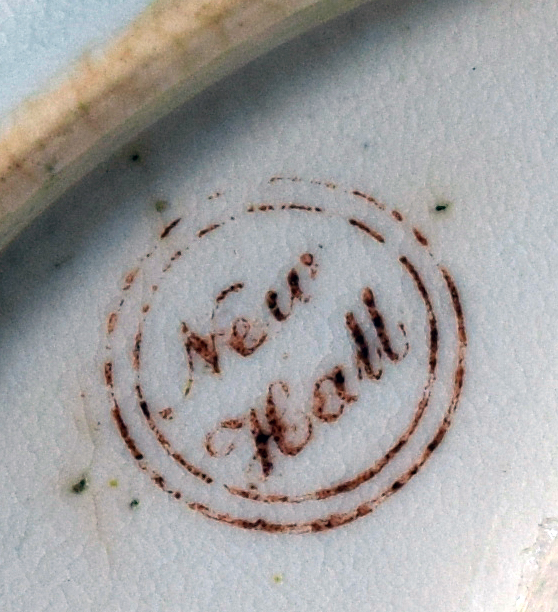 19th Century
19th Century
After Longton Hall’s unsuccessul efforts to produce porcelain, New Hall became the first Pottery to produce a recognisable and commercially viable porcelain body in Staffordshire, in the 1780s. (http://www.thepotteries.org/features/new_hall1956.htm)
New Hall is always popular with collectors. As a result, it is hard to find marked pieces that are “low budget” – and pieces with the New Hall stamp will command a high price.

Unmarked New Hall, although “affordable”, can easily be confused with wares from its many competitors all using the same decorative features. The “trick” to collecting New Hall (not to be confused with the later reincarnation in the late 19th Century) is to understand the significance of the pattern numbers (and have a good reference book to confirm that the pattern number you see corresponds to the decoration on the piece). Two of my favourite bibles for collecting New Hall are “A Guide to New Hall Porcelain Patterns” by Anthony de Saye Hutton and “New Hall” by David Holgate.
Here are a couple of New Hall pieces.
Pattern 241
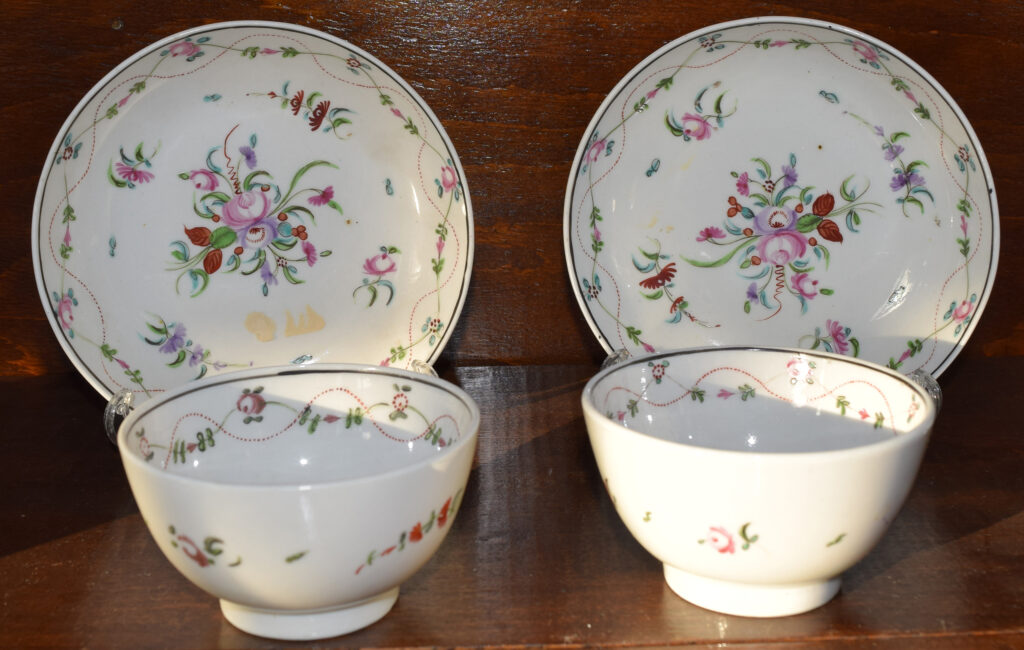
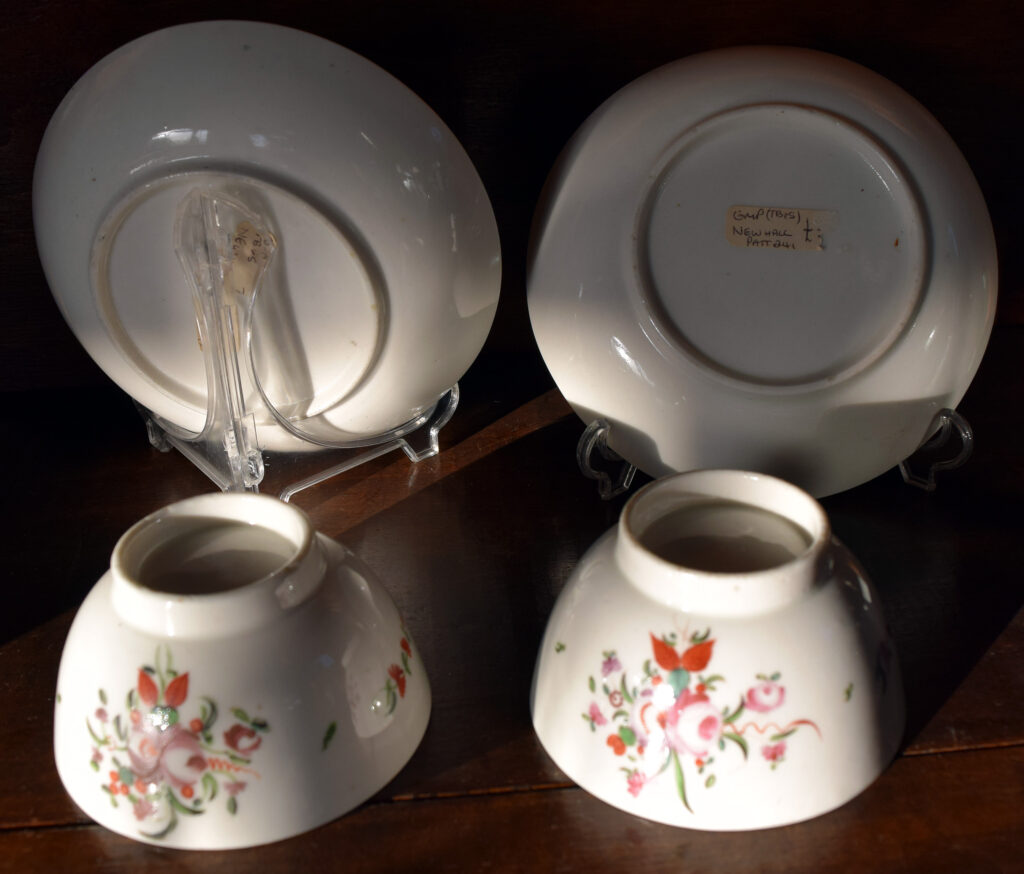
Pattern 1511
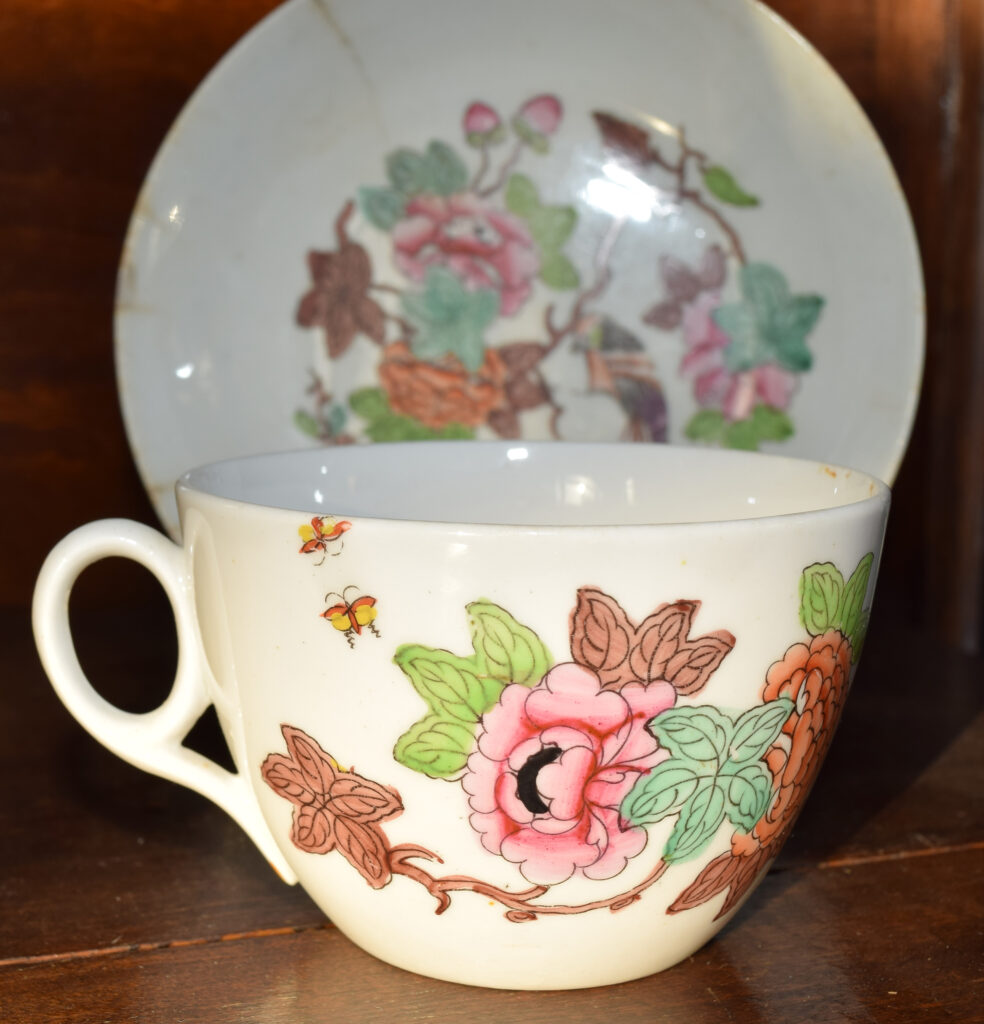
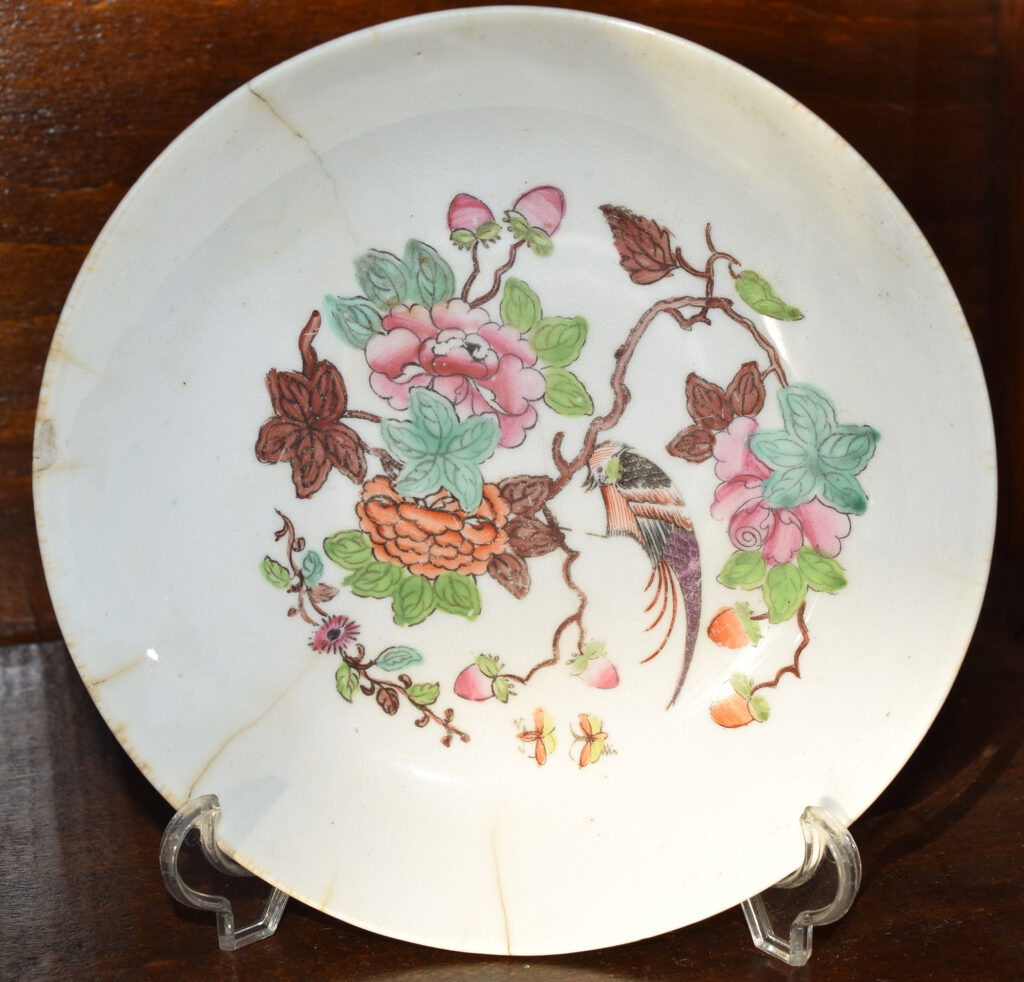
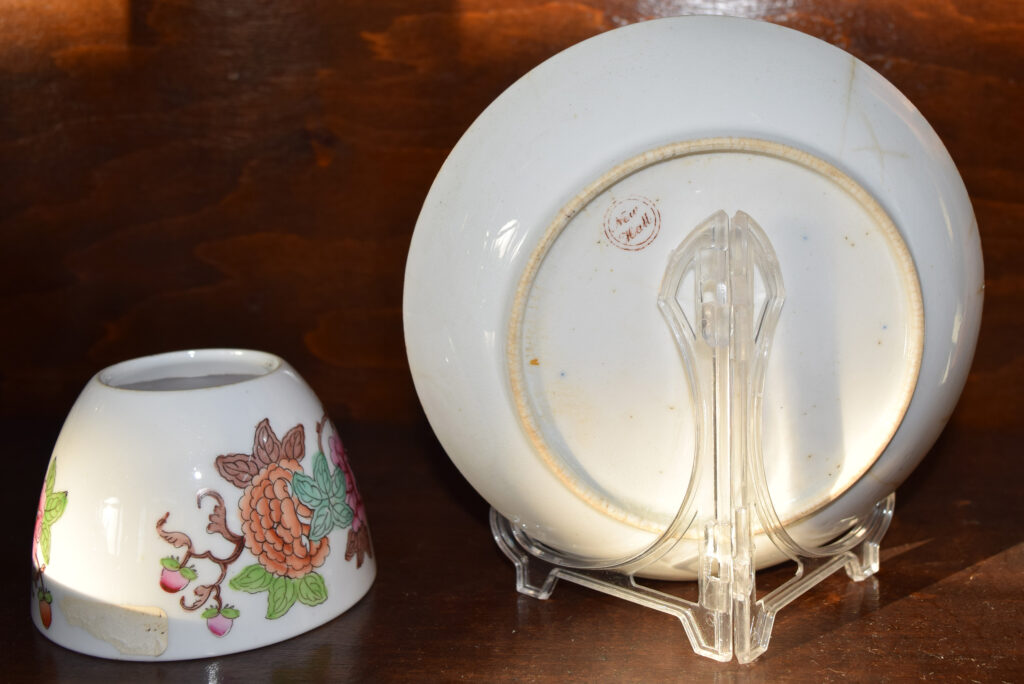
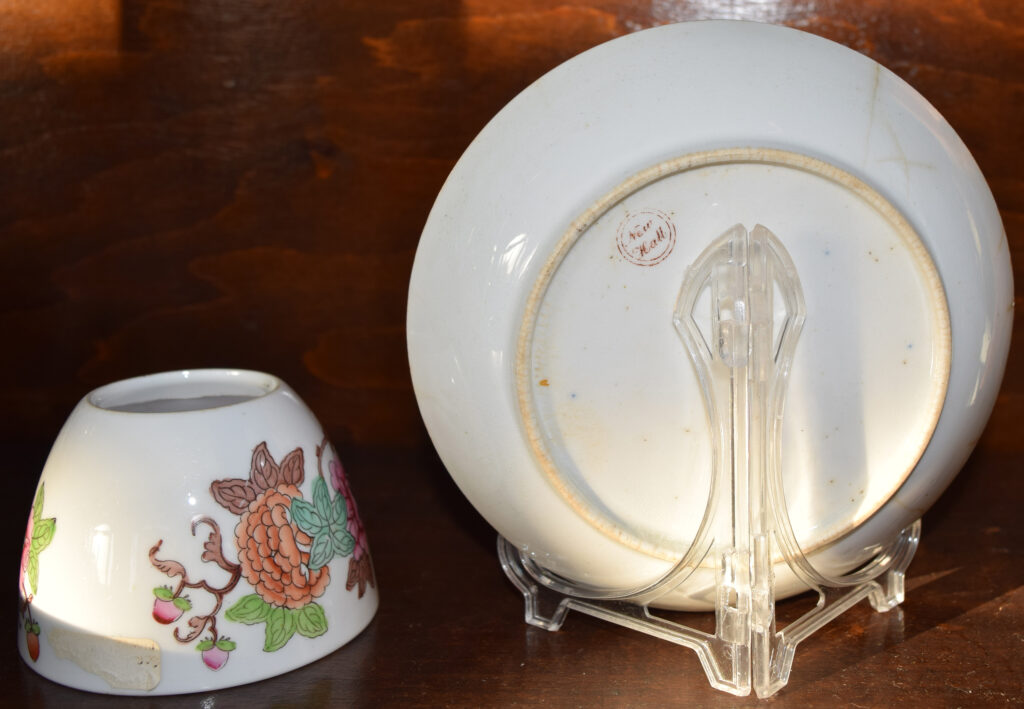

 19th Century
19th Century
Paris Porcelain – Numerous porcelain manufacturers and decorating studios flourished in Paris from the mid eighteenth century until nearly the end of the nineteenth. Competition was tough and the decorating quality was very high, so it was not unusual for the bases of the porcelain to have considerable detail – right down to the address from which more could be purchased!

This example is by M Lerosey who founded this porcelain decorating studio at 11 Rue de la Paix around 1880. Dating between 1880 and 1890, this mark not only shows his name, but also his address at 11 Rue de la Paix. Several Rue de la Paix manufacturers have been identified – Lerosey, himself had several studios along the road – going back over 60 years to around 1820 when he worked with J Rihouet. As one of the earliest studios in the road this one is actually simply known as Rue de la Paix – Lerosey’s earlier mark only differs from the 11 Rue de la Paix example by the number – 7 Rue de la Paix. The following two pictures give an idea of the overall quality of the pieces produced by Lerosey.
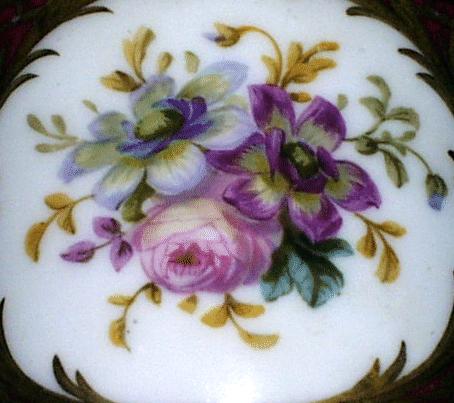

For interest – another studio along the Rue de la Paix was Number 18, founded in 1818 by Ferdinand Brunin – He signed his work Ferdind Brunin, rue de la Paix no. 18